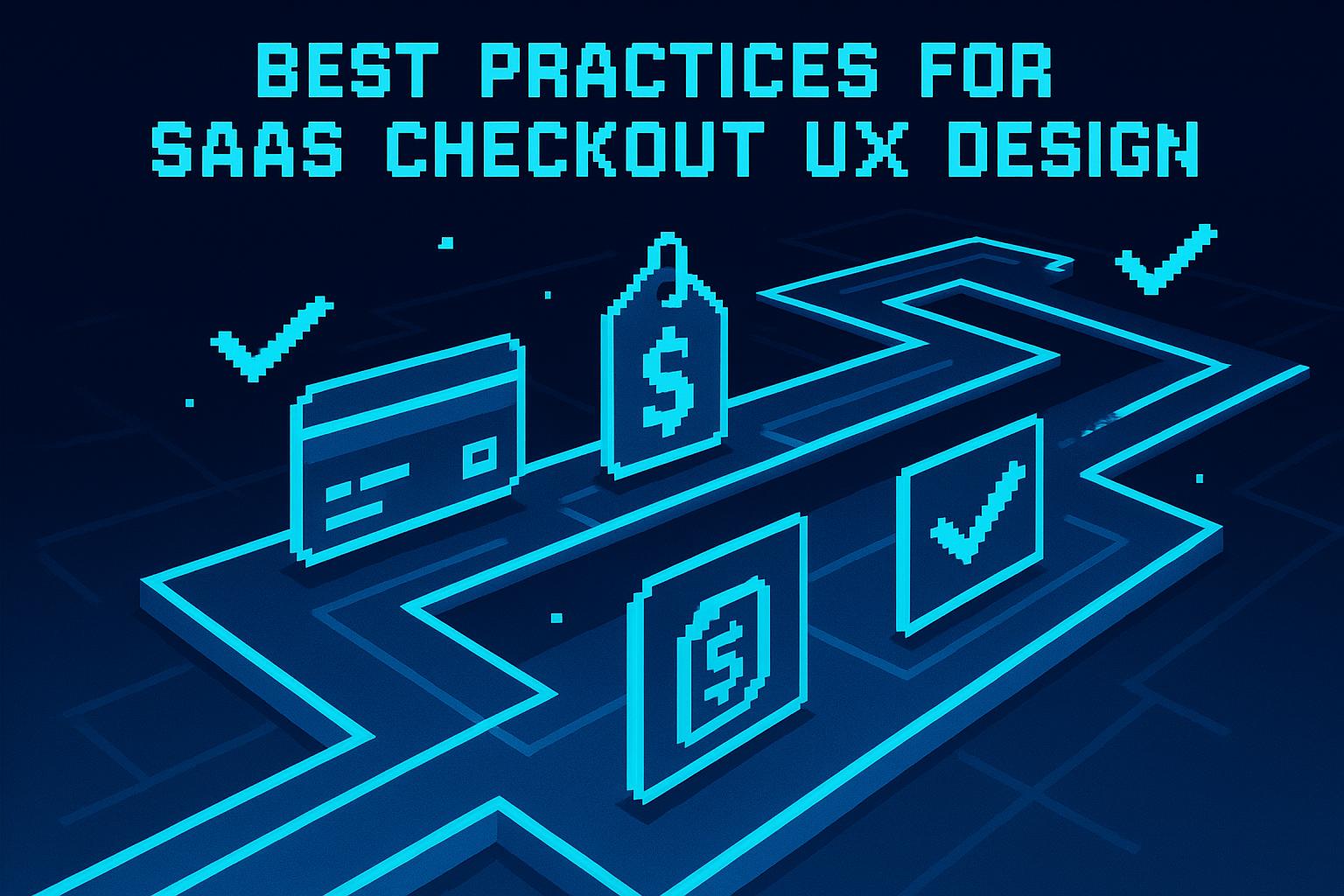If you're running a SaaS business in 2025, choosing the right payment processor is critical for managing subscriptions, reducing churn, and staying compliant with evolving tax and payment regulations. Here's what you need to know:
- Recurring Billing: Look for automated subscription management, flexible pricing models, and intelligent retry logic to handle failed payments.
- Merchant of Record (MoR): Simplifies tax compliance, fraud prevention, and invoicing, especially useful for businesses operating in multiple jurisdictions.
- Integration Options: No-code setups for quick implementation and developer-friendly APIs for custom solutions.
- Security: PCI compliance, data encryption, and fraud detection are must-haves to protect your business and customers.
- US-Specific Features: Support for ACH payments, transparent USD pricing, and automated tax calculations are essential for navigating local regulations.
Top Picks for 2025
- Stripe: Best for developers; offers advanced APIs and global reach.
- LemonSqueezy: Ideal for compliance-heavy businesses with MoR services.
- Polar.sh: Great for technical teams needing advanced API functionality.
- Creem: Suited for startups; supports cryptocurrency payments.
- Outseta: Combines payment processing with CRM and affiliate tools.
Quick Comparison
| Processor | Transaction Fee | Monthly Fee | Key Feature | Best For |
|---|---|---|---|---|
| Stripe | 2.9% + $0.30 | None | Developer tools, global reach | Technical teams |
| LemonSqueezy | 5% + $0.50 | None | MoR services, tax compliance | Compliance-focused |
| Polar.sh | 4% + $0.40 | None | Developer-friendly APIs | Growing dev teams |
| Creem | 3.9% + $0.40 | None | Crypto support | Modern startups |
| Outseta | 2% of revenue + $47 | $47 | All-in-one platform | Simplified operations |
Selecting a processor that aligns with your subscription model, compliance needs, and growth plans can save time, reduce churn, and improve revenue retention.
These Are the Top Billing Solutions in SaaS | SaaS Metrics School | SaaS Billing
Key Features to Look for in SaaS Payment Processors
When choosing a payment processor for your SaaS business, it’s essential to consider how it impacts subscription revenue and streamlines operations. The right payment processor becomes the backbone of your customer management, compliance efforts, and business growth.
Recurring Billing Support
At the heart of any SaaS payment system is automated subscription management. Your processor should seamlessly handle recurring charges, whether they’re monthly, annual, or involve mid-cycle adjustments like upgrades or downgrades.
A standout feature to look for is intelligent payment retry logic. If a customer’s payment fails, the processor should automatically retry at optimized intervals to improve collection rates.
Additionally, your billing platform must support flexible pricing models. Whether you’re working with tiered pricing, seat-based billing, usage-based charges, or a combination, your processor should adapt as your business evolves and you explore new ways to drive revenue.
This level of billing efficiency also paves the way for operational ease through merchant of record services.
Merchant of Record Services
Using a Merchant of Record (MoR) service can greatly reduce the complexity of managing payments. MoR providers handle everything from payment processing to tax compliance, fraud prevention, and invoicing. They also manage tax calculations across various states and jurisdictions, saving you from the headache of navigating state-specific tax rates.
In addition to compliance, MoR services simplify your financial operations by offering consolidated reporting and managing customer disputes. This allows your team to concentrate on what matters most - building your product and serving your customers.
No-Code Integrations and Developer-Friendly APIs
Ease of integration is another critical factor as your SaaS business grows. Look for payment processors that cater to both non-technical users and experienced developers.
- No-code integrations let you set up payment processing quickly without needing a development team. These solutions are ideal for startups or businesses looking to save time and resources.
- APIs, on the other hand, provide the flexibility for custom implementations, giving developers the tools to tailor payment processes to specific needs.
The market for no-code/low-code platforms is expected to hit $12.3 billion by 2024. No-code integrations eliminate the need for coding and lengthy security audits, offering a faster and more cost-effective alternative to traditional API setups.
| Feature | Traditional API Integration | No-Code Payment Integration |
|---|---|---|
| Development Time | Months | Minutes |
| Cost | High (developers, maintenance) | Lower |
| Security & Compliance | Managed by your team | Handled by the provider |
| Maintenance | Manual updates | Automatic updates |
For scaling SaaS businesses, developer-friendly APIs are indispensable. They enable advanced customization options through tools like webhooks, additional APIs, and code injections.
Security and Compliance
While seamless billing and integration are essential, security and compliance are non-negotiable. A reliable payment processor must adhere to PCI DSS standards to safeguard sensitive payment data. Look for features like data encryption, tokenization, and built-in fraud prevention tools to protect your business and customers.
Advanced processors often go a step further with intelligent fraud detection powered by machine learning. These systems monitor transactions in real time, identifying and stopping suspicious activity before it causes harm. Transparent audit trails and detailed reporting are also crucial for maintaining compliance and ensuring accurate revenue tracking.
US-Specific Considerations
For SaaS businesses operating in the US, local payment capabilities are key. One critical feature is ACH payment support, which can significantly lower transaction costs compared to credit card payments. For example, Stripe charges only 0.8% per ACH transaction, capped at $5 per payment.
"ACH helps businesses save money (by reducing check-related costs), improve cash flow forecasting (because you know exactly when payments will arrive and leave), and significantly reduce the risk of check fraud." - Bank of America
Additionally, your processor should offer transparent USD pricing with no hidden foreign exchange fees or surprise charges for international transactions. Automated tax handling is another must-have, as state tax laws continue to evolve. Your processor should monitor nexus thresholds, calculate and collect state-specific taxes, and provide detailed tax reports for compliance.
Lastly, ensure your payment processor supports a range of US payment methods, including major credit cards, debit cards, ACH transfers, and digital wallets. Offering multiple options ensures you can cater to your customers’ preferred payment methods and maximize conversions.
Best Payment Processors for SaaS in 2025
Here’s a look at some of the top payment processors catering to US-based SaaS businesses in 2025. Each one stands out for specific strengths, whether it’s seamless technical integration, compliance support, or competitive pricing. From recurring billing to Merchant of Record services, these platforms offer features designed to meet the needs of SaaS companies.
Stripe
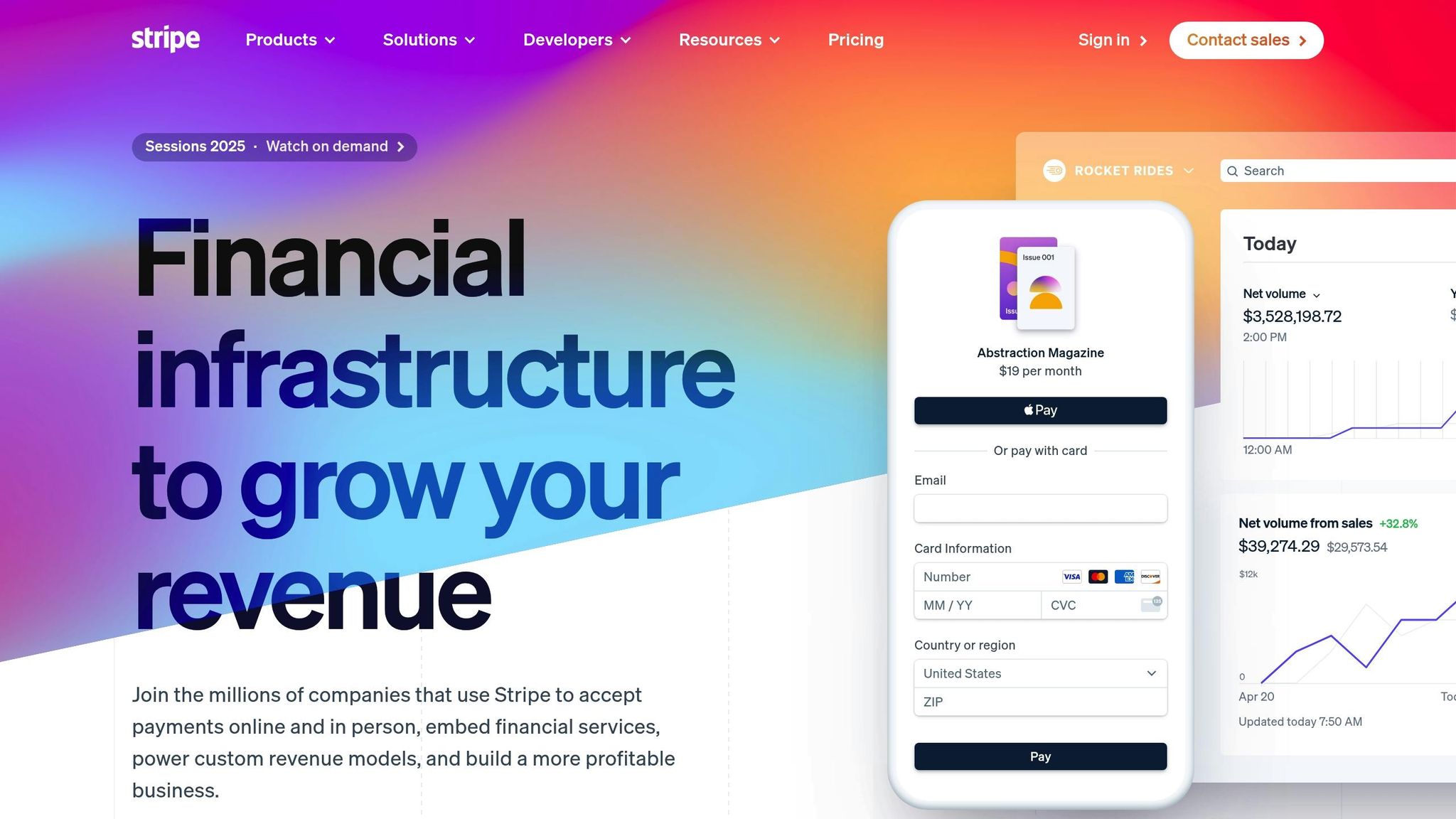
Stripe remains a top choice for SaaS businesses, particularly those with strong technical teams. It supports payments in over 195 countries and 135 currencies, making it an excellent option for companies with global aspirations.
Stripe’s developer-friendly approach is a standout feature, offering detailed API documentation, customizable webhooks, and integrations that handle proration, usage-based pricing, and mid-cycle plan changes.
- Pricing: 2.9% + $0.30 per transaction (with an additional 1% fee for international payments).
Stripe also includes intelligent dunning tools to reduce involuntary churn, which can account for 20–40% of customer attrition in SaaS businesses. However, some users have raised concerns about its customer service, describing it as "opaque and unresponsive".
LemonSqueezy
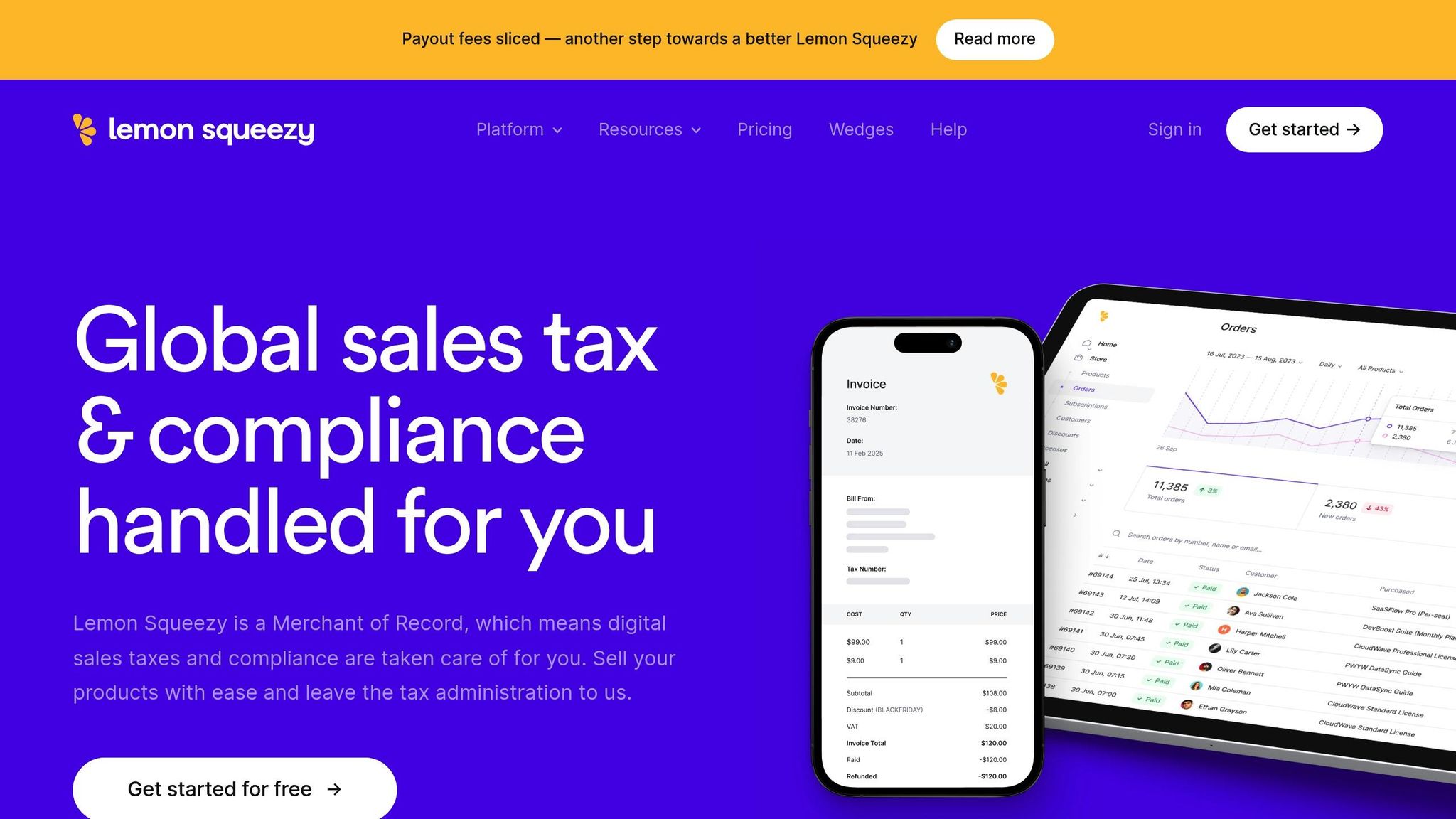
LemonSqueezy operates as a Merchant of Record, managing tax compliance, fraud prevention, and customer disputes - perfect for SaaS founders focused on building their products rather than handling backend operations.
The platform caters to SaaS businesses, digital downloads, and membership sites, offering built-in tools like automated tax calculations for both US and international markets. For non-technical founders, its no-code integration options make setup quick and easy.
- Pricing: 5% + $0.50 per transaction.
While its fees are higher than traditional processors, LemonSqueezy’s all-in-one service eliminates the need for additional vendors or in-house resources for tax and compliance management.
Polar.sh
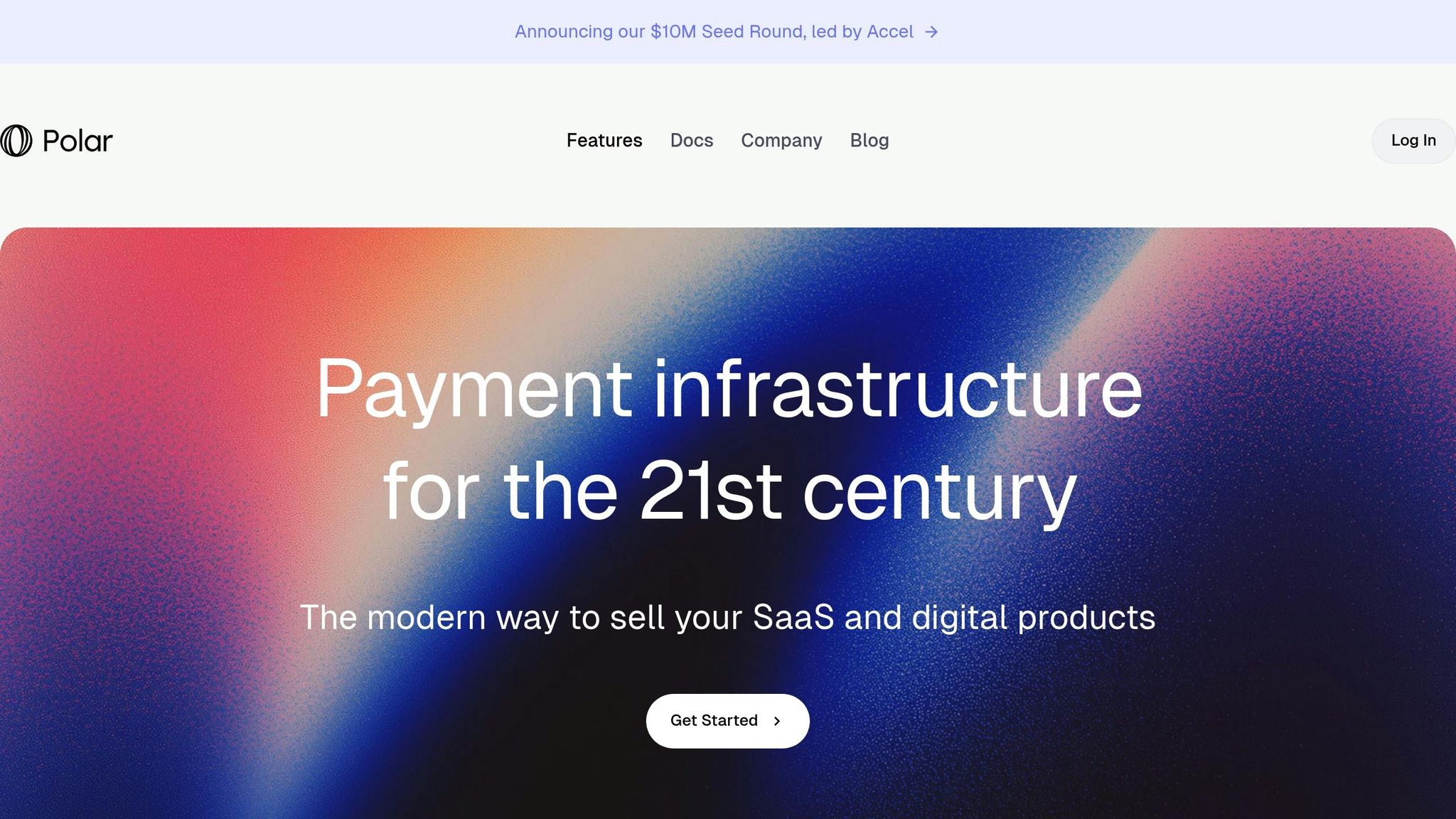
Polar.sh is tailored for developer-centric SaaS companies, offering advanced tools for subscription management, recurring billing, and webhook functionality. Its thorough API documentation ensures smooth integration for technical teams.
- Pricing: 4% + $0.40 per transaction.
Polar.sh strikes a balance between competitive pricing and developer-focused features, making it a solid choice for growing SaaS businesses.
Creem
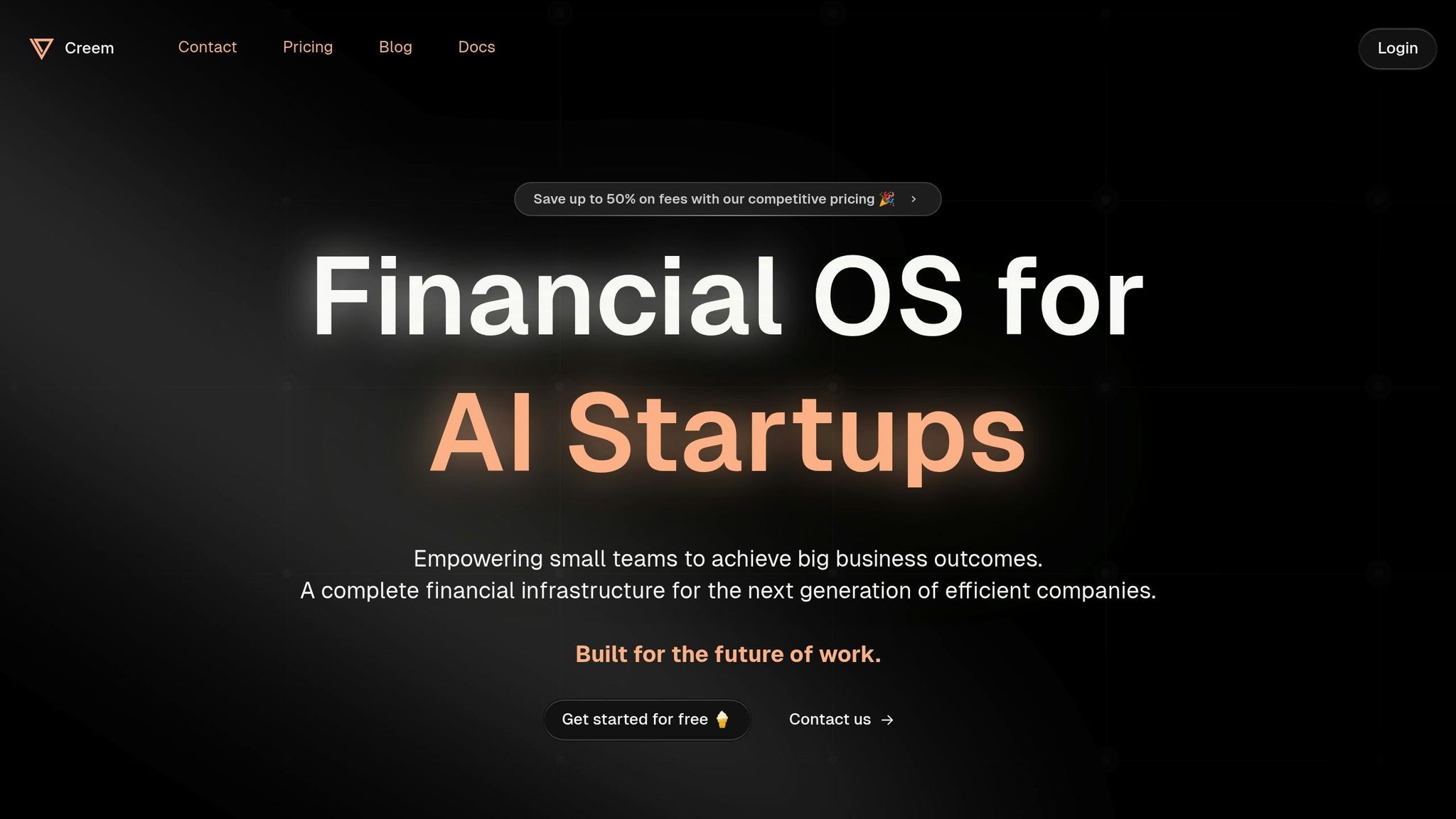
Creem offers a modern, user-friendly interface and supports recurring billing, along with cryptocurrency payment options. Its streamlined setup and intuitive dashboard provide robust functionality without unnecessary complexity.
The platform also features automated retries and a customer portal, simplifying subscription management for SaaS businesses.
- Pricing: 3.9% + $0.40 per transaction.
Though Creem is a newer player, its competitive pricing and cutting-edge features make it an appealing option for startups, even if it lacks the extensive track record of more established processors.
Outseta
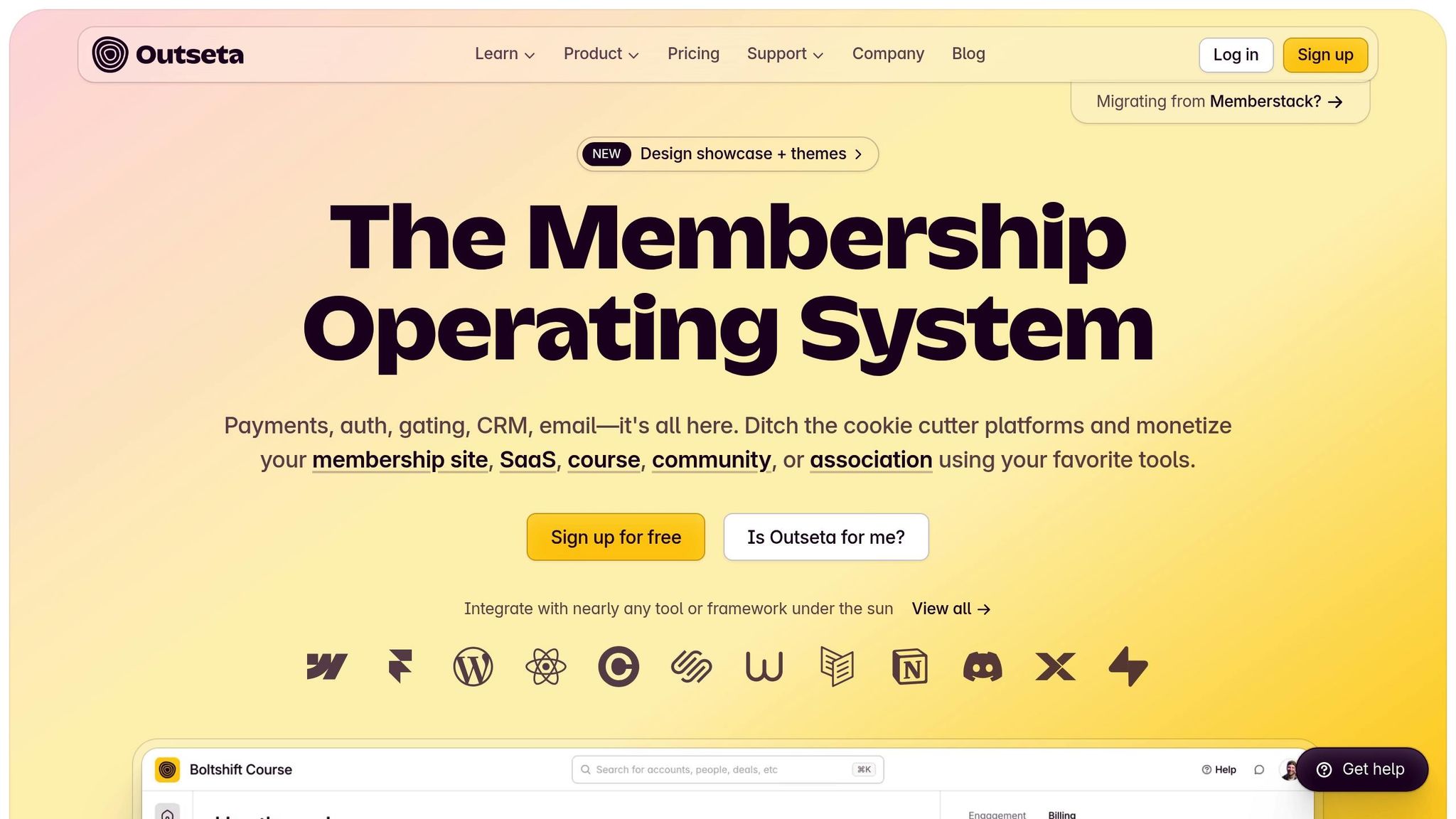
Outseta goes beyond payment processing, combining it with CRM, membership management, and affiliate marketing tools. This all-in-one platform simplifies customer lifecycle management, from lead generation to ongoing support.
Its built-in affiliate program tools make it easy to grow partner networks without requiring additional software.
- Pricing: $47 per month plus 2% of revenue.
This pricing model can be particularly cost-effective for businesses with higher transaction volumes. The flat monthly fee ensures predictable costs while providing access to a full suite of features.
| Processor | Transaction Fee | Monthly Fee | Key Strength | Best For |
|---|---|---|---|---|
| Stripe | 2.9% + $0.30 | None | Developer tools & global reach | Developers |
| LemonSqueezy | 5% + $0.50 | None | Merchant of Record services | Compliance-focused businesses |
| Polar.sh | 4% + $0.40 | None | Developer-friendly APIs | Growing dev teams |
| Creem | 3.9% + $0.40 | None | Crypto support & simplicity | Modern startups |
| Outseta | 2% of revenue | $47 | All-in-one business platform | Operational simplicity |
When choosing a payment processor, consider your company’s technical requirements, compliance needs, pricing preferences, and the features you value most. Evaluate your current transaction volume and growth plans to determine which option offers the best overall value.
Feature and Pricing Comparison Table
Here’s a breakdown of key features and pricing for popular payment processors. This table highlights their fees, capabilities, and unique strengths to help you make an informed choice.
| Feature | Stripe | LemonSqueezy | Polar.sh | Creem | Outseta |
|---|---|---|---|---|---|
| Transaction Fee | 2.9% + $0.30 | 5% + $0.50 | 4% + $0.40 | 3.9% + $0.40 | 2% of revenue |
| Monthly Fee | None | None | None | None | $47 |
| International Card Fees | +1.5% | +1.5% | +1.5% | +0% | Not specified |
| Subscription Billing | Advanced | Built-in | Developer-focused | Streamlined | Integrated |
| Merchant of Record | ❌ | ✅ | ❌ | ❌ | ❌ |
| Tax Compliance | Manual setup required | Automated | Manual setup required | Manual setup required | Not specified |
| API Quality | Excellent documentation | Good | Excellent | Good | Good |
| No-Code Integration | Limited | ✅ Easy setup | Limited | ✅ User-friendly | ✅ Simple |
| Best For | Technical teams | Compliance-focused | Developer teams | Modern startups | All-in-one solution |
Key Cost Considerations Beyond Transaction Fees
When evaluating these platforms, keep in mind additional costs that go beyond the basic transaction fees:
- Stripe: Charges an extra $15 per dispute. Instant payouts cost 1.5% of volume, with a minimum fee of 50¢. ACH Direct Debit transactions add 0.8%, capped at $5.00.
- LemonSqueezy: Its 5% + 50¢ fee consolidates various costs into one straightforward rate. Plus, email marketing is included for free for up to 500 subscribers.
- Creem: Offers transparent pricing with no hidden international surcharges, making it appealing for SaaS companies with a global reach. The 3.9% + 40¢ rate also includes features that competitors may charge extra for.
"The ideal payment partner should align with your pricing model, simplify complexity, and support your growth plans." - Erin Lansdown, Business Finance Writer - AMER, Airwallex
Feature Depth Analysis
A closer look at each platform reveals how their advanced features cater to different needs:
- Stripe: Known for its developer-friendly tools, Stripe offers customizable webhooks and supports complex pricing structures. However, tax compliance and customer relationship management require third-party solutions.
- LemonSqueezy: Stands out for its automated global tax compliance, handling calculations and remittances across jurisdictions. This feature saves SaaS companies from investing in separate tax software or legal services, especially when scaling internationally.
- Outseta: Takes an all-in-one approach by combining payment processing with CRM, membership management, and affiliate program tools. This integration reduces the need for multiple software subscriptions and streamlines customer data management.
Each platform’s pricing and features reflect its focus: Stripe emphasizes developer flexibility, LemonSqueezy simplifies compliance, and Outseta prioritizes operational efficiency.
sbb-itb-a989baf
How to Choose the Right Payment Processor for Your SaaS
Picking the right payment processor for your SaaS business is about finding the perfect balance between technical features, costs, and compliance. With over 80% of SaaS companies relying on subscriptions, your choice can significantly influence both revenue and customer satisfaction. Let’s break down the key factors to consider.
Start by evaluating your current and future business needs. Think about your pricing model - whether it’s flat-rate, tiered, usage-based, or a hybrid structure. Consider how much automation you’ll need for tasks like invoicing, payment reminders, and reconciliation. Also, check if the processor integrates smoothly with your existing CRM, ERP, and accounting systems.
Understand your customer base and their payment preferences. Knowing what your customers expect is crucial. For U.S. customers, options like credit cards, ACH transfers, and digital wallets (e.g., Apple Pay, Google Pay) are standard. If you’re planning to expand globally, keep in mind that cross-border B2B transactions are growing at a 6% annual rate. Supporting international payments is becoming increasingly important.
Look beyond transaction fees when assessing costs. Most processors charge a percentage of each payment, plus a fixed fee - like 2.9% + $0.30 per transaction. But don’t stop there. Factor in additional charges like dispute fees, instant payouts, and international transaction surcharges. SaaS billing software often has its own pricing structure, which could include a monthly fee, a percentage of billings, or a combination of both.
"Happy customers pay more: Offering a variety of secure payment options, including digital wallets and traditional methods, improves customer satisfaction and reduces churn. A smooth checkout is key to converting leads into loyal subscribers." - Tabs Team
Make security and compliance a top priority. Security is non-negotiable, especially as credit card fraud has doubled in the past five years. Look for processors that provide tokenization, encryption, and fraud detection. These features not only protect your customers but also safeguard your reputation.
Reduce involuntary churn with smart features. Tools like dunning management and AI-powered retry logic can help recover failed payments, which often account for 20–40% of customer losses. AI-powered retry systems alone can recover up to 30% of failed recurring payments, making a noticeable difference in revenue retention.
Test platforms through free trials or demos. Before committing, try out the platform. Evaluate how well it integrates with your systems and test the checkout process from your customer’s perspective. A smooth, user-friendly experience can make all the difference.
Think about scalability and customer support. As your business grows, your payment processor should grow with you. Look for a platform that can handle increasing transaction volumes and more complex billing needs. Reliable customer support and comprehensive documentation are also critical. Check how well the processor has performed for businesses similar to yours.
"Smart billing saves time and money: Integrating your payments with a robust billing system automates recurring transactions, simplifies financial management, and keeps you compliant with industry security standards. This protects your customers and builds a trustworthy brand." - Tabs Team
Know the difference between payment processors and billing software. Payment processors handle the technical side of accepting payments, while billing software manages subscriptions and invoicing. Some SaaS solutions combine these functions, offering features like revenue management, subscription tracking, localization, and tax handling.
Plan for growth and future needs. Your payment processor should be flexible enough to adapt as your business evolves. Whether it’s supporting multiple currencies or handling complex subscription models, the ability to scale without major technical headaches will save you time and resources down the road.
A great example of success is Tennis Finance. By implementing an AI-driven payment system, they reduced Days Sales Outstanding (DSO) by 30 days, improved on-time payments by 25%, cut manual intervention by 40%, and lowered payment-related churn by 20% in just one year.
Focus on long-term value, not just upfront costs. While a more expensive platform might seem like a bigger investment initially, it can save time, reduce errors, and deliver a better ROI. Choose a processor that aligns with your business goals, simplifies operations, and leaves room for growth.
Conclusion
Selecting the right payment processor for your SaaS business is more than just a technical decision - it's a strategic move that can directly impact your growth and customer retention. With the global SaaS market predicted to expand from $240.61 billion in 2022 to $374.48 billion by 2026, having a payment infrastructure that supports subscription complexities is essential.
Key features tailored to SaaS businesses can make a substantial difference. For instance, involuntary churn - responsible for 20–40% of customer losses - can be mitigated with tools like advanced dunning management, automated retry systems, and efficient subscription management. These features not only improve revenue retention but also enhance the overall customer experience.
The benefits of choosing a specialized payment processor are clear. SaaS companies leveraging Merchant of Record services often see impressive results: an 18–27% boost in conversion rates through localized payment methods, a 35% drop in cart abandonment thanks to better security messaging, and a 42% increase in international market conversions. For mid-sized SaaS businesses, this translates to an average of $2.3 million in annual revenue recovery.
Security is another critical factor. With 90% of U.S. software consumers prioritizing the safety of their billing information over convenience, features like PCI compliance and advanced fraud prevention are non-negotiable. Additionally, 71% of users value businesses that address the challenges of complex billing plans and demonstrate an understanding of their specific needs.
The payment processor landscape offers diverse solutions for SaaS businesses at every stage of growth. Whether you're drawn to Stripe's robust API capabilities, LemonSqueezy's Merchant of Record services, or Creem's modern approach to subscription management, each platform brings unique strengths to the table. Developer-friendly tools like Polar.sh or all-in-one platforms like Outseta provide options tailored to your specific requirements.
To simplify this process, platforms like Choose a Payment Provider for Your SaaS offer curated comparisons, detailed feature analyses, and actionable insights. Instead of spending countless hours researching, you can focus on the solutions that align with your goals - whether it’s recurring billing, seamless integrations, or global expansion.
Ultimately, the right payment processor should act as a growth partner. It should scale with your business, reduce operational burdens, and deliver the reliability your customers expect. With 84% of software customers citing responsive customer service as a key reason for maintaining their subscriptions, your payment infrastructure becomes an integral part of customer satisfaction.
Start by evaluating your current needs and where you want to grow. While no solution is perfect, focusing on a processor that meets your immediate requirements and has room to scale can save you the cost and hassle of switching later. Aligning your payment infrastructure with your business goals ensures a solid foundation for sustainable growth.
FAQs
What should SaaS businesses look for in a payment processor in 2025?
When selecting a payment processor for your SaaS business in 2025, it's essential to prioritize features tailored to subscription-based models. Look for options that support recurring billing, subscription management, and usage-based pricing to handle the complexities of SaaS revenue streams effectively. Additionally, choosing a processor with multi-currency support ensures you can manage global payments effortlessly, while compliance with PCI DSS and advanced security measures like 3D Secure 2.0 safeguards customer data.
Integration should be straightforward, so consider processors offering developer-friendly APIs and no-code tools to streamline the setup process and minimize manual work. Automation features can save time and improve efficiency, while detailed reporting tools provide valuable insights into your revenue and performance metrics. Ultimately, opt for a payment solution that supports your business growth and delivers a seamless experience for your customers.
What are the benefits of Merchant of Record (MoR) services for SaaS companies expanding internationally?
Merchant of Record (MoR) Services: A Game-Changer for SaaS Companies
For SaaS companies expanding across borders, Merchant of Record (MoR) services offer a practical solution to tackle the complexities of global operations. By taking on the legal responsibility for tasks like tax compliance, payment processing, and navigating regulatory requirements, MoRs remove a significant administrative burden. This means SaaS businesses don't have to register for taxes in every country, calculate varying tax rates, or manage filings - saving both time and reducing legal risks.
But that's not all. MoRs also handle currency conversions, fraud prevention, chargebacks, and PCI compliance, ensuring transactions are secure and hassle-free. With these responsibilities off their plate, SaaS companies can focus on what matters most: building their product and expanding their customer base. MoR services make it easier to grow globally without being bogged down by payment and compliance headaches.
Why is it essential for a SaaS payment processor to offer both no-code integrations and developer-friendly APIs?
Having both no-code integrations and developer-friendly APIs is a game-changer for SaaS payment processors. Why? It gives businesses of all sizes and technical expertise the tools they need to succeed.
With no-code integrations, non-technical teams can easily add payment functionality, streamline workflows, and get their systems up and running quickly - all without needing a developer. This approach not only speeds up implementation but also helps cut costs, making it especially appealing for startups or smaller teams working with limited resources.
On the flip side, developer-friendly APIs open the door to advanced customization. They allow businesses to design payment workflows that fit their unique needs, connect seamlessly with other systems, and scale operations as they grow. By offering both options, payment processors ensure they can meet the demands of simple, plug-and-play setups as well as complex, tailored solutions. This flexibility helps SaaS businesses adapt and thrive in a competitive market.

